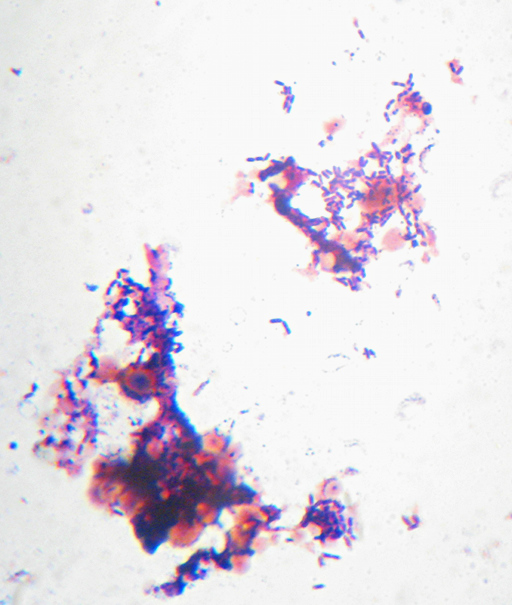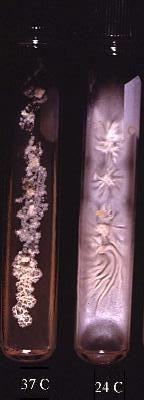 Yes, I’m still here – though I don’t know if any of YOU are.
Yes, I’m still here – though I don’t know if any of YOU are.
The pay at my job is somewhat low for the skillset it requires, but makes up for that by having a very reasonable workload, a pleasant work environment, and certain perks – like access to the electronic journals that my employer subscribes to. I added an RSS feed from pubmed intended to cover my main interests – basically edible and industrial microbiology and biotechnology. Every day, a list of 300-600 or so new scientific articles pops up in my feedreader and I scan through the titles looking for anything interesting to me. Unintentionally, my selection appears to also result in quite a bit of diabetes, obesity, and sports medicine research. Lately I’ve taken a moderate interest in our own most blatantly bacterial components, the mitochondria.
Mitochondria are kind of like a nearly 2-billion-year-long case of typhus (or Rocky Mountain Spotted Fever, if you prefer). After infecting our ancestors (and now us) for so long, they’ve been reduced to dependency on living in our cells. Perhaps a bit like the progression from wolves to Chinese Crested dogs. On the other hand, having thoroughly domesticated them, we get a lot of use out of them, and couldn’t live without them. Their ability to harness the electron-sucking power of oxygen means we get almost 20 times more energy out of our food than we otherwise would, which is a good thing since biologically speaking, keeping the hideously complicated mess of biochemistry that makes up a human body takes a ridiculous amount of biochemical energy compared to that of normal organisms (i.e. prokaryotes).
Lately in the stream of new publications I’ve been seeing a number of papers suggesting that a lack of proper mitochondrial activity might be related to obesity and related problems (e.g. “metabolic syndrome”, type 2 diabetes and insulin resistance, obesity-related “inflammation”, and so on) and even some age-related problems, both physical and mental. There is some seriously interesting research going on into treatments to potentially stimulate mitochondrial activity and whether this might help solve a number of health problems.
So…take good care of your mitochondria. For the past couple of weeks I’ve been trying to pay special attention to properly feeding my mitochondria and making sure I take them for regular walks (and paddling trips and so on). It could, of course, be purely psychosomatic, but right now I feel better than James Brown…
There’s a fair amount of rational skepticism over using drugs or nutritional supplements to stimulate mitochondria, but here’s a tip that I suspect everyone’s doctor would accept: make sure you take your mitochondria for regular walks. Frequent exercise (particularly endurance exercise) seems to be a scientifically well-accepted way to induce production of more mitochondria.
But now I have to go to bed. My main complaint with work these days is that it eats up essentially my entire day, leaving me with just enough time for some household chores between getting up in the morning and going to bed in the evening. Not their fault I live almost and hour and a half from work, though (and at least the commute is through relatively low-traffic and scenic terrain.). Still, it makes it hard to get blog posts and podcasts done (episode 4, on the subject of “heat-fixing” of bacteria for microscopy – particularly Mycobacterium tuberculosis – will be out as soon as I can manage. Still pondering the subject of Episode 5. I’m saving the “Two Mass Spectrometers, High Performance Liquid Chromatography, and a Female Donkey” episode for later when I manage to surpass the “nearly 3” listeners that I seem to be stuck at…)




 I’m still not sure I know why I have a desire to push recordings of my voice onto a more or less innocent worldwide population, but I do. And now I have a real theme to wrap an attempt at a podcast (or as I prefer – “oggcast”) around: scientific papers.
I’m still not sure I know why I have a desire to push recordings of my voice onto a more or less innocent worldwide population, but I do. And now I have a real theme to wrap an attempt at a podcast (or as I prefer – “oggcast”) around: scientific papers.


